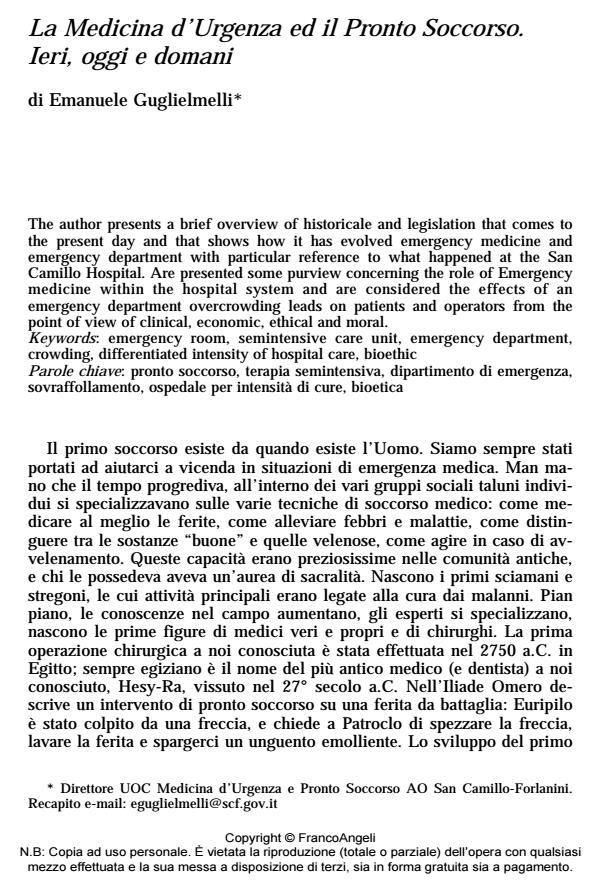La Medicina d’Urgenza ed il Pronto Soccorso. Ieri, oggi e domani
Journal title SALUTE E SOCIETÀ
Author/s Emanuele Guglielmelli
Publishing Year 2014 Issue 2014/2
Language Italian Pages 16 P. 69-84 File size 502 KB
DOI 10.3280/SES2014-002007
DOI is like a bar code for intellectual property: to have more infomation
click here
Below, you can see the article first page
If you want to buy this article in PDF format, you can do it, following the instructions to buy download credits

FrancoAngeli is member of Publishers International Linking Association, Inc (PILA), a not-for-profit association which run the CrossRef service enabling links to and from online scholarly content.
The author presents a brief overview of historicale and legislation that comes to the present day and that shows how it has evolved emergency medicine and emergency department with particular reference to what happened at the San Camillo Hospital. Are presented some purview concerning the role of Emergency medicine within the hospital system and are considered the effects of an emergency department overcrowding leads on patients and operators from the point of view of clinical, economic, ethical and moral.
Keywords: Emergency room, semintensive care unit, emergency department, crowding, differentiated intensity of hospital care, bioethic
Emanuele Guglielmelli, La Medicina d’Urgenza ed il Pronto Soccorso. Ieri, oggi e domani in "SALUTE E SOCIETÀ" 2/2014, pp 69-84, DOI: 10.3280/SES2014-002007